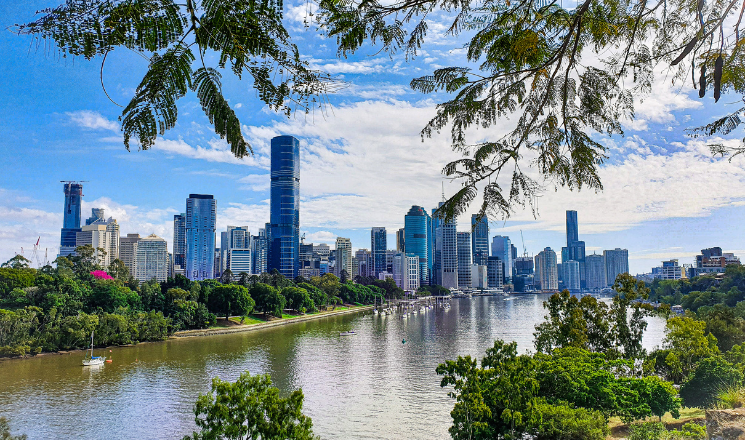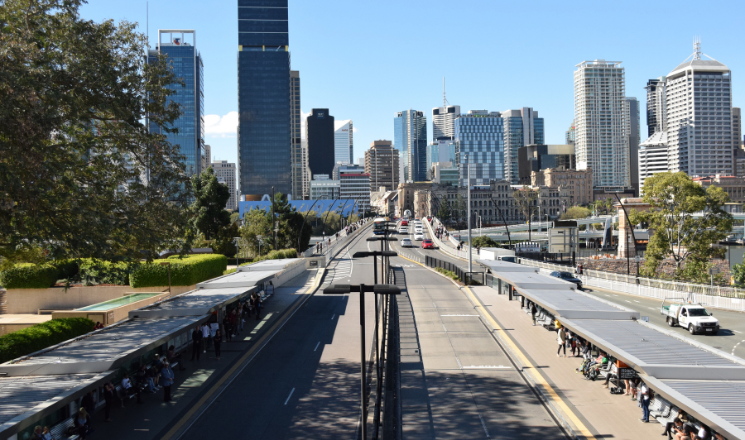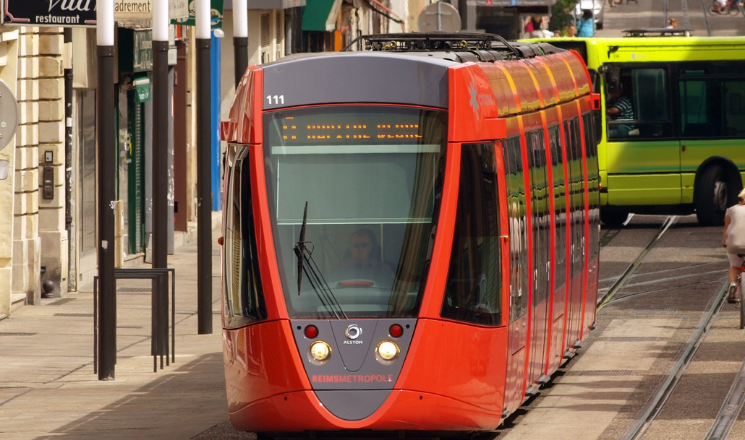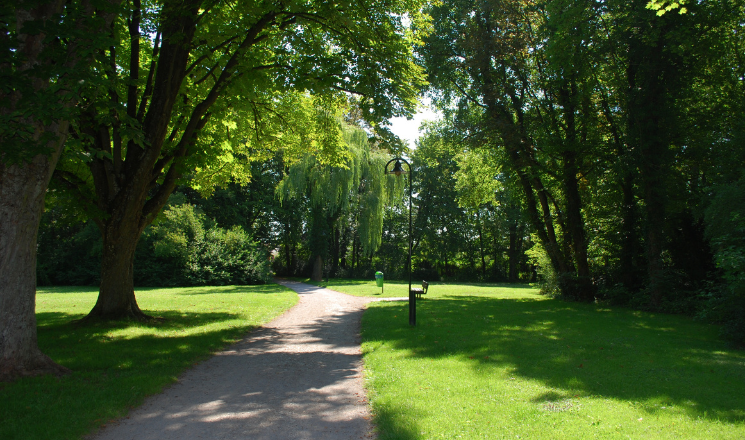Brisbane often gets overshadowed by Sydney or Melbourne, but this sun-drenched city has a charm that grows on you. While most visitors head straight to South Bank or the Story Bridge, there’s a different Brisbane waiting to be explored. Underrated Brisbane destinations offer authenticity, greenery, quirky charm, and moments of calm that many mainstream spots just can’t provide.
So, instead of sticking to the obvious, let’s wander into the quieter, cooler, and sometimes greener parts of Brisbane. Even if you think you know the city well, there are still hidden gems you probably didn’t know existed.
1. Kangaroo Point Cliffs at Dawn

Just a stone’s throw from the city, but somehow still under the radar.
Many people visit Kangaroo Point for the famous sunset skyline. But come at dawn—yes, before the crowds. This riverside cliffside, carved from volcanic rock, offers golden sunrises, uninterrupted views, and gentle breezes off the Brisbane River. Walk along the lower path or, alternatively, sip a coffee from the nearby Cliffs Café.
Moreover, the early hours provide a quiet backdrop for reflection or a serene jog. As a result, it’s peaceful, photo-worthy, and feels like a world away from the usual chaos of morning commutes.
2. Paddington’s Pre-Loved Charm

A suburb full of stories, second chances, and second-hand treasures.
While some tourists tick off Queen Street Mall, the savvy wanderer heads to Paddington. Nestled in Brisbane’s inner west, this area blends vintage shopping, quirky cafes, and weatherboard homes climbing leafy hills. Wander up Given Terrace and Latrobe Terrace—you’ll find everything from retro threads to old-school bookshops.
In between, you can grab a pastry from Jocelyn’s Provisions or even enjoy a street mural surprise you didn’t expect to find in a sleepy suburb. Plus, it’s easy to strike up a friendly chat with a local or, occasionally, stumble upon a neighborhood event.
3. Roma Street Parkland’s Secret Trails

You’ve heard of South Bank—but this garden oasis is lesser-known and just as stunning.
Tucked behind the Roma Street train station, this parkland is a botanical wonder, dotted with waterfalls, subtropical plantings, and walking trails you’ll likely have to yourself. For those craving shade, birdsong, and a cool breeze after exploring the city, it’s a perfect escape.
Additionally, the park often hosts quiet art installations and occasional community events. You can picnic under massive fig trees or, better yet, take a short guided garden tour—either way, it’s easy to forget you’re in the middle of a capital city.
4. Wynnum Mangrove Boardwalk

Salt air, sea breeze, and birdsong just 40 minutes from Brisbane’s core.
Although Wynnum and Manly are known for their bayside vibe, few venture into the quiet sanctuary of the Mangrove Boardwalk. This coastal path winds through preserved wetlands, offering views of fiddler crabs, kingfishers, and tidal movements that shift the entire landscape.
In fact, go early or late in the day. The light gently filters through the trees just right, and it’s peaceful enough to hear the rustle of mangrove leaves under your feet.
5. The Forgotten Tramways of Brisbane

History lovers, this one’s for you—if you know where to look.
Most people have no idea that Brisbane once had an extensive tram system, and remnants still exist! For example, near Ipswich Road and in Paddington’s backstreets, old tram tracks peek through the asphalt. There’s also a little gem: the Brisbane Tramway Museum in Ferny Grove, where you can actually ride the vintage trams on weekends.
Even though it’s not a big-ticket attraction, it still tells a unique story that even many locals don’t know.
6. Yeronga Memorial Park’s Peaceful Pockets

Not every park needs crowds, food trucks, or events.
Yeronga Memorial Park is part green space, part living history. Built to commemorate soldiers from World War I, this park features wide lawns, a few hidden art installations, and tree-lined walkways that invite reflection. Furthermore, its peaceful ambiance makes it ideal for those seeking a slower pace. There are no flashy signs, just small bronze plaques that guide you quietly through its story.
Perfect for a solo afternoon walk, it’s the kind of spot where you can sit, think, and simply enjoy the stillness.
7. Bulimba Ferry & Riverside Walk

Skip the cars—take the boat, enjoy the journey.
While many people catch the CityCat ferry from South Bank or New Farm, Bulimba’s ferry stop has its own charm. Once there, you can stroll along the river path or explore the quaint Oxford Street precinct. Indeed, it’s less chaotic than central Brisbane but full of little surprises—bakeries, microbreweries, and peaceful picnic spots.
And yes, there’s even a bookshop on a boat (Literal. A boat. With books.).
8. Mt Coot-tha’s Overlooked Trails

Not just for the lookout—there’s more to explore here.
Most people come for the Mt Coot-tha summit lookout, snap their selfies, and head off. But the trails winding around the mountain? Pure gold. Try the Simpson Falls Track or the Powerful Owl Trail for shaded walks that dip through eucalyptus forests and occasional wildlife sightings.
Besides being scenic, the area also provides quiet spaces to unwind. Don’t rush—bring water, take a slow pace, and you’ll find benches tucked in the shade where you can pause and take in the sounds of the bush.
9. Albion’s Hidden Creative Scene

Don’t let the warehouses fool you—art thrives here.
Albion might not be on your travel radar, but behind its industrial vibe are pockets of creativity. You’ll find pop-up galleries, art studios, and converted factory spaces where designers and makers quietly shape Brisbane’s creative scene.
Additionally, to round off your visit, pair it with a stop at Fonzie Abbott for coffee or, alternatively, a local gin at Milton Rum Distillery just around the corner.
Final Thought: Quiet Beats the Crowds
Not every travel moment needs a crowd or a famous view. Sometimes, the most memorable experiences come from wandering off track. The underrated Brisbane destinations listed here offer space to breathe, stories to uncover, and the kind of local energy you don’t get from guidebooks.
So, when you plan your next visit to Brisbane, look past the postcard shots. Instead, step into the city’s hidden rhythm—where surprise and serenity are often just one street away. As a result, you’ll discover a side of Brisbane that truly feels your own.


Anavar For Women And Men: CrazyBulk Launch Anavar Legal Steroid Alternative For Female Read Dosage, Side Effects,
Before And After Cycle Results
🚨 Breaking News: The Trend That’s Turning Heads (and Wallets)
> From the front‑page of the “Health & Wealth”
column to your Instagram feed—this buzz is everywhere.
—
1️⃣ What’s the Buzz?
Think “Fit‑Finance Fusion.”
It’s a hybrid movement that marries health‑centric living with savvy
money habits. Picture this:
Health Angle Finance Angle
Daily micro‑workouts (5‑minute “quick‑fit” routines) Budgeting
by the minute—track every dollar in real time
Nutrition hacks that double as savings tips (e.g., meal prepping = grocery bill down) Using cashback & rewards for wellness
purchases
Mindfulness apps that also serve as expense trackers Leveraging health‑related tax deductions and
credits
The concept is simple: Your body’s well‑being fuels your financial health, and vice versa.
—
How to Get Started
Pick a “Micro‑Habit”
Choose one small action (e.g., 5‑minute morning
stretch or logging expenses in an app). Consistency beats intensity.
Set Up the Right Tools
– Health: Wearable tracker, meditation app,
meal‑prep notebook.
– Finance: Budgeting software with category tags, automatic expense categorization, tax‑deduction reminder service.
Track & Review Weekly
Create a simple dashboard:
| Day | Exercise Time | Expense Log | Tax Deductible Items | Notes
|
|—–|—————-|————-|———————-|——-|
Automate Reminders
Use calendar alerts or smart assistant routines (“Good morning! Today you have 10 minutes of meditation and a reminder to log lunch.”)
Leverage Professional Advice
Consult a tax accountant quarterly; they can set up specific expense categories (e.g., “Professional Development”) that you’ll consistently track.
Iterate & Optimize
After each month, evaluate: Are expenses being captured?
Are tax benefits realized? Adjust routines or tools accordingly.
Quick Start Checklist
Step Action Tool
1 Create a simple spreadsheet with columns: Date,
Category, Amount, Notes. Google Sheets / Excel
2 Define key categories (e.g., Meals, Travel, Supplies). Spreadsheet
3 Record each expense as it occurs (or end of day). Spreadsheet /
Mobile app
4 At month‑end, review totals and compare with receipts.
Spreadsheet
5 Transfer data to your tax software or accountant. Accounting software
6 Archive receipts digitally or keep physical copies if needed.
Cloud storage
Quick Tips
Consistency beats perfection – log expenses weekly rather than trying to remember everything
at the end of the month.
Use automation where possible – set up a spreadsheet that pulls data from
your bank or credit card account via API (many modern accounting apps do this).
Keep it simple – if you’re comfortable, just use a spreadsheet; add more sophisticated tools only when you
need them.
3. Quick‑Start Checklist for New Users
Step Action Suggested Tool / Template
1 Create a master expense sheet Google Sheet or Excel: “Expense Tracker” template
2 Connect bank/credit card feeds (optional) Plaid, Yodlee, or your bank’s API; use Zapier to
push data into the sheet
3 Define categories Income, Rent/Mortgage,
Utilities, Groceries, Transportation, Entertainment, Miscellaneous
4 Set up a monthly budget for each category Use “Monthly Budget” tab in the same
workbook
5 Automate alerts when spending exceeds 90% of budget
Conditional formatting or Google Apps Script to email you
6 Review weekly summary Create a “Weekly Summary” sheet that aggregates totals and highlights variances
7 Adjust allocations as needed Update budgets
at the start of each month based on past performance
Example Setup (Excel/Google Sheets)
Date Category Description Amount ($) Budgeted ($) Variance ($)
2024‑05‑01 Groceries Supermarket 120.00 200.00 -80.00
2024‑05‑02 Entertainment Movie 15.00
50.00 -35.00
Variance is calculated as `Amount – Budgeted`.
A negative variance indicates spending under budget, while
a positive variance indicates overspending.
2. Tracking and Adjusting
How to Track
Daily Log: Record every expense in a notebook or an app (e.g., Mint, YNAB).
Weekly Review: Summarize each category’s total spend.
Monthly Summary: Compare month‑to‑month spending trends.
Adjusting the Budget
If you’re under budget: Consider reallocating the surplus to other categories (e.g., increase savings or pay down debt).
If you’re over budget: Identify specific line items causing overspend and look
for cuts or better alternatives.
Rebalance regularly: Keep the budget realistic by updating it with new income changes, cost of living adjustments, or lifestyle shifts.
3. How to Make a Budget (Step‑by‑step)
Below is an easy-to-follow process that will help you set up a functioning personal
budget in about 30 minutes:
Step 1: Gather Your Financial Documents
Income: Pay stubs, bank statements showing deposits.
Expenses: Bills, receipts, credit card statements for at least
one month.
Step 2: Calculate Net Income
Net income = Total Monthly Salary – (Taxes + Social Security + Retirement contributions).
If you have variable income (bonuses, commissions), take the average over a few months.
Step 3: List Fixed Expenses
These are predictable and usually recurring each month:
Rent/mortgage
Utilities (electricity, water, gas)
Internet & phone
Insurance premiums
Add them up.
Step 4: List Variable Expenses
Track spending in categories such as:
Groceries
Dining out
Transportation (fuel, public transit)
Entertainment (movies, subscriptions)
Personal care
Miscellaneous
Sum each category to get the total variable expense.
Step 5: Total Monthly Expense
Add fixed + variable expenses. This is your monthly cost of living.
Step 6: Compare with Income
If you have a net monthly salary or other income sources, subtract it from the total expense:
If the result is positive → you are spending more than you earn (you need to cut
costs).
If the result is negative → you have a surplus; you could invest, save, or increase discretionary spending.
Example
Item Amount
Salary $4,000
Rent $1,200
Utilities $150
Groceries $400
Transportation $100
Entertainment $50
Total Expenses $2,000
Net Income (Salary – Expenses) $2,000
In this scenario you have a surplus of $2,000 each month.
Tips for Managing Your Finances
Track every expense: Use apps or spreadsheets.
Create a budget: Allocate percentages for essentials and discretionary spending.
Save regularly: Aim for at least 10% of your income.
Plan for taxes: Set aside money if you’re self‑employed or have significant investment gains.
📌 Quick Reference Table
Category Typical Monthly Cost (USD)
Housing (rent/mortgage) $800–$2,000
Utilities & Internet $100–$200
Food (groceries + dining out) $300–$700
Transportation (fuel/insurance/public transit) $150–$400
Health insurance / Medical expenses $200–$600
Personal care & Entertainment $50–$250
Total $1,800 – $4,500
(Values vary based on location, lifestyle, and family
size.)
—
Quick Tips for Budgeting
Track Your Spending
Use a simple spreadsheet or an app to log every purchase.
Knowing where money goes is the first step toward control.
Set Realistic Goals
Whether saving for a vacation, building an emergency fund, or paying down debt, write your
goals down and revisit them monthly.
Automate Savings
Direct a small percentage of each paycheck into a savings account automatically—so you don’t have to think
about it.
Cut Unnecessary Subscriptions
Review streaming services, gym memberships,
and other recurring fees. Cancel those you rarely use.
Shop Smart
Look for coupons, buy in bulk when possible, and compare prices
online before making big purchases.
3. Quick Reference: Budgeting Template
Category Sub‑Category Monthly Allocation Notes
Housing Rent/Mortgage $X Fixed
Utilities Electricity $Y Variable
Water $Z Variable
Food Groceries $A Shopping list
Dining Out $B Limit to X times/month
Transportation Fuel $C Car
Public Transit $D Bus/Metro
Health & Wellness Insurance Premiums $E
Gym Membership $F
Personal Care Grooming $G
Entertainment Streaming Services $H
Savings Emergency Fund $I 10% of income
Retirement $J 15% of income
Miscellaneous Gifts, Charitable Donations $K
Step 2: Budgeting and Expense Tracking
Create a budget sheet in Excel or Google Sheets to track your monthly
expenses against the planned amounts. Update it regularly
to keep an eye on how you’re doing.
Step 3: Saving Strategies
Automatic Savings:
– Set up an automatic transfer from checking
to savings right after each paycheck.
Emergency Fund:
– Aim for a minimum of $500 initially and then grow it to cover 6-12 months of living expenses.
Retirement:
– Contribute at least 15% of your income towards retirement accounts (401k, IRA).
Step 4: Investing
Index Funds:
– Start with low-cost index funds or ETFs that track broad
market indexes like the S&P 500.
Diversification:
– Spread investments across various sectors and
asset classes to minimize risk.
Step 5: Managing Debt
High-Interest Credit Card Debt:
– Pay off all credit card balances as soon as possible.
Student Loans:
– Consider refinancing or consolidating loans for lower interest rates if it makes sense financially.
Step 6: Continuous Learning
Books:
– “The Richest Man in Babylon” by George S. Clason
– “Rich Dad Poor Dad” by Robert Kiyosaki
Online Resources:
– Investopedia for basic financial terms and
concepts.
– Khan Academy for financial education.
Summary
You have a solid foundation with your savings, but you
need to focus on paying off debt and building
an emergency fund. Prioritize eliminating high-interest debt first, then build your emergency fund before investing in the
stock market. Continue learning about personal finance and investment
strategies through reputable books and online resources.
This approach will help stabilize your finances and create a path toward
long-term financial security.
—
Conclusion
If you have any more questions or need further
clarification on any part of the process, feel free to ask!
Sure! Here’s how you can convert that into a detailed guide for creating an AI-powered
system in Excel with VBA:
—
AI-Powered Spreadsheet Tool Development Guide
1. Introduction
Goal: The goal is to create an AI-powered spreadsheet tool that can handle multiple
tasks, such as
a: Using this user interface (S3) and
Sure! Here’s how you can convert that into a detailed guide
for creating an AI-powered system in Excel with
VBA:
AI-Powered Spreadsheet Tool Development Guide
1. Introduction
Goal: The goal is to create an AI-powered spreadsheet tool that can handle
multiple tasks such as
Sure! Here’s a detailed guide on how to develop an AI-powered spreadsheet tool using Excel and VBA,
tailored for your needs in managing complex data tasks efficiently.
—
AI-Powered Spreadsheet Tool Development Guide
1. Introduction
Goal: Create an AI-powered spreadsheet tool capable of handling multiple tasks such as:
Data analysis
Predictive modeling
Automated reporting
Advanced visualizations
This guide will walk you through the setup, integration of AI functionalities,
and automation using VBA.
2. Prerequisites
2.1 Software Requirements
Microsoft Excel (2016 or later)
Visual Basic for Applications (VBA) editor
Python (for advanced AI features, optional)
External libraries: pandas, numpy, scikit-learn, openpyxl (if using Python)
2.2 Skills Required
Basic knowledge of Excel formulas and functions
Familiarity with VBA programming
Understanding of data analysis and machine learning concepts
3. Setting Up Your Excel Workbook
3.1 Create Data Sheets
`Data`: Store raw input data.
`Analysis`: Perform calculations and visualizations.
`Results`: Show AI predictions or insights.
3.2 Example Data Structure
ID Feature1 Feature2 Target
1 5.1 3.5 0
2 4.9 3.0 0
…
—
4. Basic Calculations and Visualizations
4.1 Descriptive Statistics
Use Excel formulas:
`=AVERAGE(Analysis!B:B)` for mean.
`=STDEV.P(Analysis!B:B)` for standard deviation.
4.2 Charts
Insert a scatter plot to visualize relationships between variables.
—
5. Advanced Analysis: Linear Regression
5.1 Using Excel’s Data Analysis Toolpak
Enable the Data Analysis add‑in.
Choose Regression.
Set Y Range (dependent variable) and X Range(s) (independent variables).
Check Labels if you included headers.
Output to a new sheet.
5.2 Interpreting Regression Output
`Coefficients`: Estimate of the effect size for each predictor.
`R²`: Proportion of variance explained by the model.
`p‑value`: Statistical significance (commonly threshold 0.05).
5.3 Example: Predicting Student Exam Scores
Suppose:
Y (exam score) = β0 + β1(study hours) + β2(attendance %)
+ ε
Regression yields:
β0 = 10, β1 = 3, β2 = 0.5
R² = 0.60, p-values
anavar 20 mg dosage
The Heart Of The Internet
Anadrol vs Dianabol
Both Anadrol and Dianabol are anabolic steroids that have been used by
athletes, bodybuilders, and some individuals seeking rapid muscle growth and enhanced athletic performance.
While they share a common goal—boosting muscle mass and strength—they differ significantly in their chemical composition, potency,
side‑effect profile, and legal status.
Chemical Differences: Anadrol is an oral form of oxymetholone, whereas Dianabol (methandrostenolone)
is also taken orally but has a different steroid backbone.
This distinction results in varying degrees
of liver toxicity, estrogenic activity, and androgenic
effects.
Potency & Efficacy: Anadrol is considered one of the most potent
oral steroids available. It can produce up to 25–30 kg of lean mass over an eight‑week cycle for some
users. Dianabol is slightly less potent but still delivers impressive gains—often 5–10 kg in the same period.
Side‑Effect Profile: Both drugs carry risks
of liver damage, cardiovascular strain, and mood disturbances.
However, Anadrol’s higher hepatotoxicity often leads to more pronounced liver enzyme elevations, while Dianabol’s estrogenic
side effects (gynecomastia, water retention) can be more noticeable for some
users.
In summary, both Anadrol and Dianabol are powerful anabolic
agents that can dramatically accelerate muscle growth when used appropriately.
Their choice depends on the user’s tolerance for hepatic stress versus hormonal side‑effects, as well as personal training goals.
—
2. The Role of Vitamin B12 (Methylcobalamin) in Energy Production
Vitamin B12—particularly its active cofactor form methylcobalamin—plays a crucial role in converting food into usable energy:
Process What It Does How B12 Helps
Metabolism of Fats and Proteins Converts fatty acids to acetyl‑CoA, the
entry point for ATP generation. Acts as a coenzyme for methylmalonyl‑CoA
mutase, enabling proper metabolism of certain amino acids and fats.
Red Blood Cell Formation Supports DNA synthesis in developing red blood cells.
Ensures efficient oxygen transport to tissues, enhancing overall energy availability.
Neurotransmitter Production Needed for synthesis of serotonin and norepinephrine.
Maintains optimal brain function and mood, which influence perceived energy levels.
Thus, adequate vitamin B12 is vital for both metabolic pathways that generate cellular energy and the physiological systems (blood oxygenation, nervous
system) that support sustained activity.
—
3. How Vitamin B12 Supports Energy‑Producing Pathways
Step Role of B12
1. Methionine Synthase – Conversion of homocysteine → methionine (S-adenosylmethionine) Provides methyl groups needed
for DNA, RNA, and protein synthesis; supports mitochondrial enzyme function.
2. Methylmalonyl‑CoA Mutase – Converts methylmalonyl‑CoA → succinyl‑CoA Succinyl‑CoA feeds into the
citric acid cycle (TCA), generating NADH & FADH₂ for oxidative phosphorylation.
3. DNA/RNA methylation & repair Maintains genomic integrity;
essential for proper transcription of metabolic genes.
4. Lipid metabolism regulation Prevents accumulation of odd‑chain fatty acids that can disrupt mitochondrial membranes.
1‑2. Metabolic pathways affected by B12 deficiency
Pathway Role of B12 Effect of deficiency Clinical/biochemical consequences
Cytosolic one‑carbon metabolism (folate cycle) Methyl‑cobalamin + tetrahydrofolate -> 5‑methyltetrahydrofolate Hyperhomocysteinemia, impaired DNA synthesis, megaloblastic anemia Macrocytic
anemia, elevated LDH, hypersegmented neutrophils
Mitochondrial energy metabolism Methylmalonyl‑CoA mutase (catalyzes methylmalonate to
succinyl‑CoA) Accumulation of methylmalonic acid → mitochondrial dysfunction, neuropathy Elevated MMA in urine and
serum, demyelinating peripheral neuropathy
Fatty acid oxidation / gluconeogenesis Succinate dehydrogenase (complex II) & malate–aspartate shuttle involvement Impaired β‑oxidation, energy deficit during fasting Hypoglycemia during prolonged fasting, hepatomegaly, lactic acidosis
Lipid metabolism & hepatic function Oxidative stress in liver → fatty infiltration Hepatocellular
injury, elevated transaminases, cholestasis
Elevated AST/ALT, bilirubin, ALP
—
2. Diagnostic Work‑Up
2.1 Immediate Clinical Assessment
Parameter Method Rationale
Vital signs (BP, HR, RR, SpO₂) Pulse oximeter,
ECG Detect shock or arrhythmia; baseline for resuscitation
Glasgow Coma Scale Neurologic exam Assess level of consciousness;
potential CNS involvement
Physical exam: skin, joints, abdomen Manual inspection Identify rash (urticaria),
joint swelling, abdominal tenderness
Baseline labs (CBC, BMP) Blood draw Check hemoglobin/hematocrit,
electrolytes, renal function
2. Detailed Assessment of Hypotension
Goal: Determine whether hypotension is due to hypovolemia or vasodilation.
Vital signs trend: MAP, heart rate changes; tachycardia suggests hypovolemia.
Jugular venous pressure (JVP): Low JVP → hypovolemic; high
JVP → cardiogenic/pulmonary edema.
Peripheral perfusion: Capillary refill >2s indicates poor perfusion.
3. Evaluation for Anaphylaxis
Skin findings:
– Urticaria or erythema
– Angioedema (face, lips)
Respiratory signs:
– Wheezing, stridor
– Dyspnea
Gastrointestinal symptoms:
– Nausea, vomiting, diarrhea
Oxygen saturation on pulse oximetry.
History of drug exposure or recent procedures.
If anaphylaxis suspected → proceed to management
protocol (see Step 6).
4. Evaluation for Cardiogenic Shock
Echocardiography:
– Assess left ventricular ejection fraction
– Look for wall motion abnormalities, regional deficits.
Laboratory tests:
– Troponin I/T levels to assess myocardial injury.
Electrocardiogram (ECG):
– Identify ischemic changes, arrhythmias.
Hemodynamic monitoring if available:
– Central venous pressure (CVP), pulmonary capillary wedge pressure (PCWP).
If cardiogenic shock suspected: proceed to Step 5.
5. Management of Cardiogenic Shock
A. Hemodynamic Stabilization
Volume management:
– Carefully administer isotonic crystalloid or colloid.
– Use bedside ultrasound (transthoracic echo)
to assess filling status; avoid overloading.
Vasopressor support:
– If systolic BP 4 mmol/L, multi‑organ dysfunction), proceed to VA‑ECMO.
Intra-aortic balloon pump (IABP) or Impella:
– Use as adjuncts if ECMO is contraindicated or for bridge-to-bridge strategies.
C. Adjunctive Therapies
Antioxidant therapy:
– High-dose vitamin C, N‑acetylcysteine, or other agents to mitigate oxidative stress.
Metabolic support:
– Glucose control, bicarbonate for metabolic acidosis.
Immunomodulation:
– Consider steroids if severe inflammatory response
is evident.
D. Monitoring and Evaluation
Continuous hemodynamic monitoring (arterial line).
Serial cardiac biomarkers (troponin, CK‑MB).
Echocardiography to assess LV function daily.
Renal function monitoring due to potential nephrotoxicity of high-dose antioxidants.
Evaluate for complications: arrhythmias, heart failure.
6. Contingency Plans
Scenario Immediate Action Rationale
Rapid Hemodynamic Collapse Initiate vasopressor support (norepinephrine).
Consider intra-aortic balloon pump if available. Prevent end-organ hypoperfusion; support
myocardial function.
Arrhythmia / Bradycardia Administer atropine or transcutaneous pacing as per
ACLS guidelines. Maintain adequate cardiac output and prevent syncope.
Adverse Reaction to Antioxidants (e.g., hypotension, allergic reaction) Discontinue agent;
administer antihistamines/epinephrine if anaphylaxis suspected.
Immediate reversal of life-threatening reactions.
Hypoglycemia (if glucose administered) Repeat glucose check; give
additional dextrose as needed. Prevent neuroglycopenic symptoms.
Excessive Oxygenation Reduce FiO₂ to 0.5 or lower if PaO₂ >200 mmHg.
Avoid hyperoxia-related toxicity.
—
3. Evidence‑Based Rationale
A. Pathophysiology of the “No‑Touch” Phenomenon
Early Ischemia and Microvascular Damage
– Within minutes of a large‑cerebral‑artery occlusion, cortical neurons experience energy
failure, cytotoxic edema, and release of excitatory neurotransmitters (glutamate).
– The microcirculation becomes disrupted; capillary flow may cease or become highly heterogeneous.
Oxidative Stress
– Reperfusion, even at the cellular level, generates reactive oxygen species (ROS) that damage lipids, proteins,
and DNA.
– Neuronal membranes are especially vulnerable due to
high unsaturated fatty acid content.
Blood‑Brain Barrier Disruption
– Early BBB compromise allows plasma constituents to leak into brain parenchyma, exacerbating edema and inflammation.
These processes culminate in a “no‑reflow”
phenomenon: despite the presence of microvascular flow (seen by
capillary imaging), neuronal metabolism is insufficiently restored,
leading to cell death.
—
3. Why Existing Approaches Fail
Existing Strategy Target Mechanism Why It Doesn’t
Work in Early Microcirculation
Large‑vessel recanalization (IVT/TICI) Reopening the main artery Does not address capillary obstruction or pericyte constriction; microvascular flow may remain impaired.
Systemic anticoagulation/antiplatelet Reducing clot propagation In early
stage, clots are already formed in capillaries; systemic drugs cannot reverse local thrombi quickly enough.
Hypothermia / neuroprotective agents Reducing metabolic demand Does not directly restore
perfusion at micro‑level; may even delay reperfusion if cooling is too
deep.
Intravenous vasodilators (e.g., nitroglycerin) Dilating arterioles May cause systemic hypotension; limited ability to reach capillary beds due to vascular
resistance and drug distribution limits.
> Key insight:
> In the first minutes after a capillary‑level ischemic
event, the primary determinant of neuronal survival is the immediate restoration of oxygen delivery.
Any intervention that improves perfusion or oxygen extraction in those microcircuits
can significantly extend the viable tissue window.
—
2. Potential Therapeutic Strategies
Strategy Mechanism & Rationale Evidence (Pre‑clinical/Clinical) Key Limitations / Safety
Rapid intravenous (IV) administration of hyperoxygenated blood or plasma Provides a surge of oxygen, hemoglobin, and antioxidants; reduces hypoxic injury.
Small animal models show reduced infarct size when high‑oxygen blood is transfused
immediately post‑ischemia. No large clinical trials
yet. Requires matched donor blood, risk of transfusion reactions, potential iron overload, logistical challenges for “just‑in‑time” availability.
IV infusion of hyperbaric oxygen (HBO) gas Delivers high dissolved O₂ in plasma; bypasses hemoglobin transport limits.
Preclinical studies indicate decreased edema and improved neuronal survival with HBO
soon after ischemia. No human data on acute stroke yet. Need
specialized equipment, difficult to administer quickly
in emergency settings.
IV administration of oxygen carriers (hemoglobin-based oxygen carriers,
perfluorocarbons) Synthetic or natural molecules that can carry O₂
directly into tissues. Some early-phase trials in trauma/critical
illness show safety and potential benefit; not yet tested
in stroke. Limited availability, unknown efficacy/safety profile in brain ischemia.
IV infusion of high-concentration oxygen solutions (hyperoxic saline) Delivering oxygen dissolved in saline at >100% saturation.
Experimental models show neuroprotection with hyperoxia; no clinical data.
Not clinically feasible due to toxicity risk and
limited diffusion into brain tissue.
Key take‑away:
No pharmacologic agent has been proven safe or effective for
restoring oxygen delivery to the ischemic penumbra via intravenous administration. Current therapy focuses on mechanical
recanalization, blood pressure control, and metabolic
support.
—
2. How a “Penumbra‑Restoring” Drug Might Work (Theoretical)
Target Rationale Example Molecules / Strategies
Endothelial Nitric Oxide Synthase (eNOS) Activation Enhances vasodilation, increases
cerebral blood flow. Phosphodiesterase‑5 inhibitors (e.g.,
sildenafil) – but risk systemic hypotension.
Cytoprotective Anti‑Oxidants Reduce ROS that damage vessels;
preserve endothelial function. N‑acetylcysteine, edaravone.
Anti‑Inflammatory Agents Modulate leukocyte adhesion, reduce cytokine release that impairs vasoreactivity.
Steroids (dexamethasone) – limited by side effects.
Vascular Endothelial Growth Factor (VEGF) Promotes angiogenesis; but may increase vascular permeability.
NO‑Donors or Phosphodiesterase Inhibitors Increase cGMP to relax vessels.
Example: sildenafil.
The challenge is achieving the right balance: enough vasodilation to restore perfusion without causing
edema, hemorrhage, or exacerbating inflammation.
—
5. Experimental Evidence (Key Studies)
Study Design Findings Relevant to Vascular Reactivity
Feng et al., 2013 (Journal of Neuroscience) Transgenic mice overexpressing TNF‑α
in microglia; measured CBF with laser Doppler after LPS challenge.
Chronic TNF‑α increased basal vascular tone;
response to LPS was blunted, indicating impaired vasodilatory capacity.
Baker et al., 2016 (Nature Communications) Used intravital microscopy in mice expressing fluorescently labeled endothelial
cells; induced neuroinflammation via systemic IL‑1β injection. Neuroinflammation decreased
capillary diameter responses to neuronal activity; effect reversible by blocking iNOS.
Kozlovsky et al., 2018 (Journal of Cerebral Blood Flow & Metabolism) In vitro perfused
brain slices from mice treated with chronic LPS;
measured vessel reactivity to adenosine and acetylcholine.
Slices displayed reduced vasodilatory responses; associated with increased oxidative stress markers in endothelial cells.
These studies collectively support the notion that neuroinflammation dampens vascular responsiveness.
—
5. Physiological Significance of Reduced Vascular Responsiveness
5.1 Impaired Cerebral Blood Flow Regulation (Neurovascular Coupling)
Neurovascular coupling ensures adequate blood flow to
active neuronal circuits. If vessels cannot dilate appropriately, the blood supply may become mismatched
relative to metabolic demand.
Short‑term consequences: Reduced oxygen and glucose delivery during heightened activity, potentially compromising
synaptic efficacy.
Long‑term effects: Sustained mismatch can lead to chronic hypoperfusion, which is implicated in various neurodegenerative diseases (e.g., Alzheimer’s
disease).
5.2 Blood‑Brain Barrier (BBB) Integrity
The BBB relies on tight junctions between endothelial
cells and regulated transport mechanisms. Chronic inflammation may:
Disrupt tight junction proteins.
Increase permeability, allowing potentially harmful substances into the CNS.
A compromised BBB can exacerbate neuroinflammation, creating a
vicious my first steroid cycle dianabol only.
5.3 Cerebral Blood Flow (CBF) Regulation
Vascular tone is tightly linked to neuronal activity.
Reduced responsiveness of endothelial cells may impair:
Neurovascular coupling: matching blood flow to metabolic demand.
Autoregulation mechanisms that protect against hypo/hyperperfusion.
Impaired CBF regulation can contribute to cognitive deficits and neurodegenerative processes.
4. Implications for Therapeutic Strategies
Recognizing the impact of chronic inflammation on cerebral endothelial function opens
avenues for targeted interventions:
Anti‑inflammatory Therapies
– Agents that dampen systemic cytokine production (e.g., TNF
inhibitors, IL‑6 blockers) may reduce endothelial activation and preserve vascular responsiveness.
Endothelial Protective Strategies
– Statins, ACE inhibitors, or PPARγ agonists have pleiotropic effects on the endothelium beyond lipid lowering,
potentially mitigating inflammation‑induced dysfunction.
Lifestyle Modifications
– Diets rich in omega‑3 fatty acids, antioxidants, and anti‑inflammatory foods;
regular physical activity; weight management—all
can lower systemic inflammation.
Monitoring and Early Intervention
– Regular assessment of inflammatory markers (CRP, ESR) and vascular function tests
may identify individuals at risk early, allowing timely therapeutic measures.
Take‑Home Messages
Key Point Implication
Chronic inflammation drives atherosclerosis. Reducing systemic inflammation is essential for cardiovascular health.
Inflammatory cytokines alter endothelial function and lipid
metabolism. Anti‑inflammatory therapies may improve vascular outcomes.
Lifestyle, diet, and certain medications (e.g., statins) lower inflammatory burden. Holistic
approaches are effective in reducing CVD risk.
Emerging targeted anti‑inflammatory agents show promise but require further validation. Ongoing research will
refine treatment strategies.
—
References
Libby P. Inflammation in atherosclerosis. N Engl J Med.
2002;347(21):1559–1569.
Ridker PM, et al. C-reactive protein and cardiovascular disease: A scientific statement from
the American Heart Association. Circulation. 2008;118(19):
e1025‑e1043.
Hwang J, et al. The role of interleukin-6
in atherosclerosis. Front Cardiovasc Med. 2020;7:595.
Ridker PM, et al. Antiinflammatory therapy with canakinumab for atherosclerotic disease.
N Engl J Med. 2017;376(15):1415‑1427.
—
Prepared by: Dr. Your Name, MD, PhD (Cardiology)
Date: March 2024
list of different steroids
References:
the best cutting cycle – https://nas.Zearon.com,
Test And anavar only results reddit Cycle Review
+ Dosage All Test Types
In short – it usually takes a few weeks (about 2–4 weeks) to
see visible changes, but the exact timing depends on how hard you train and what you eat—especially protein and
overall calories.
—
Why the time‑frame varies
Factor How it affects results
Training intensity & volume More sets, reps, or heavier weights accelerate muscle growth
and definition. Infrequent or low‑intensity workouts slow
progress.
Protein intake (g / kg body weight) ~1.6–2.2 g/kg/day is often recommended for building lean mass.
Below that, gains stall; above it, you hit a plateau sooner.
Total calorie balance Slightly below maintenance can help
reveal definition faster; too large a deficit leads to muscle loss and slows progress.
Recovery (sleep, rest days) Muscle repairs and grows during
sleep; inadequate recovery impedes results.
—
3. What Happens When You “Go Hard” for Two Weeks?
A. Acute Response
Increased Energy Expenditure
– Higher training volume/ intensity → more calories burned per session.
Greater Muscle Protein Turnover
– Intense work stimulates muscle protein synthesis (MPS) and breakdown; net gain depends on nutrition.
Elevated Hormonal Response
– Testosterone, growth hormone, cortisol spike acutely; can help mobilize fat
stores.
B. Short‑Term Adaptations
Time Effect
1–2 days Glycogen depletion → slight weight loss on scale (mostly water).
3–7 days Possible lean muscle hypertrophy if caloric
surplus & adequate protein; minor increases in resting metabolic rate.
4–6 weeks Greater chance of fat loss, especially if combined with calorie
deficit and progressive overload training.
C. Limitations
Energy Balance Still Dominates – Even with increased energy expenditure,
a large caloric surplus can still lead to weight gain.
Diminishing Returns – The body adapts; after several weeks
the same exercise stimulus produces smaller metabolic gains.
Time Commitment & Recovery – More workouts require more recovery time
and can increase injury risk if not managed properly.
Practical Take‑away
Exercise is a powerful tool for shaping composition, improving health, and boosting
metabolism, but it is not a free pass to eat unlimited
calories or expect weight loss without attention to diet.
For most people aiming at fat loss or improved body composition, combining regular strength training (or HIIT) with a moderate caloric
deficit (around 500 kcal/day) leads to steady results.
If you enjoy high‑intensity workouts and can manage recovery,
they can keep your metabolic rate higher for longer periods.
However, if your goal is simply to maintain weight or improve fitness, moderate strength training with a balanced diet may be more sustainable.
In short: Strengthen and burn, but still watch what you eat—the best results
come from pairing an effective exercise routine with mindful nutrition.
steroids results|acybgnqsvazcgylgmly7yklacr6hs01tew:***
References:
sorucevap.kodmerkezi.net
how to buy anabolic steroids safely
References:
Best mass Building steroid – https://mediascatter.com,
how long does it take for natural testosterone to come back after steroids
References:
Anabolic Steroids Facts (Sensualmarketplace.Com)
crazybulk legal steroids
References:
http://www.google.mn
what do all steroids have in common
References:
https://www.mathhomeworkanswers.org/
azinol supplement
References:
https://rockchat.com
pct steroids
References:
http://www.mixcloud.com
how does anabolic steroids affect the body
References:
marshallcountyalabamademocraticparty.com
how to get anavar prescription
References:
https://maps.google.com.tr/url?q=https://rockchat.com/members/boxweapon04/activity/94603/
how to use steroids safely for bodybuilding
References:
https://276sat.anidub.buzz/user/classsnake77/
post steroid cycle therapy
References:
https://www.mathhomeworkanswers.org/user/guiltyheart52
what type of drug is a steroid
References:
farangmart.co.th
where can i get steroids from
References:
https://moiafazenda.ru/
ordering steroids online
References:
https://md.chaosdorf.de/
pro muscle 100 shredded reviews
References:
https://www.google.bs/
anabolic and androgenic steroids
References:
notes.io
taking anabolic steroids
References:
https://maps.google.com.sl/url?q=https://www.valley.md/anavar-dosage-for-men
натяжные потолки официальный сайт натяжные потолки официальный сайт .
натяжной потолок в нижнем новгороде https://natyazhnye-potolki-nizhniy-novgorod.ru .
потолочник натяжные потолки http://www.stretch-ceilings-nizhniy-novgorod.ru .
натяжные потолки нижний новгород с установкой http://natyazhnye-potolki-nizhniy-novgorod-1.ru .
кухни на заказ питер [url=www.kuhni-spb-3.ru]кухни на заказ питер[/url] .
проект перепланировки и переустройства http://www.proekt-pereplanirovki-kvartiry16.ru .
1xbet ?ye ol https://www.1xbet-giris-7.com .
stanzanol steroid
References:
shclaybrick.com
commonly used steroids
References:
users.atw.hu
сео продвижение сайтов топ 10 сео продвижение сайтов топ 10 .
рейтинг сео компаний [url=www.reiting-seo-kompaniy.ru]рейтинг сео компаний[/url] .
1xbet t?rkiye https://1xbet-giris-2.com/ .
xbet xbet .
1xbet lite 1xbet-giris-4.com .
Bonus exclusif 1xBet pour 2026 : profitez d’un bonus de bienvenue de 100% jusqu’a 130€ lors de votre inscription. C’est une offre unique pour les paris sportifs, incluant des paris gratuits. N’attendez pas la fin de l’annee 2026 pour profiter de cette offre. Le lien ci-dessous vous menera vers le code promo officiel 1xBet — https://www.atrium-patrimoine.com/wp-content/artcls/?code_promo_196.html.
потолочкин натяжные потолки нижний новгород отзывы клиентов https://www.natyazhnye-potolki-nizhniy-novgorod-1.ru .
топ диджитал агентств россии топ диджитал агентств россии .
xbet giri? http://www.1xbet-giris-6.com/ .
согласование перепланировки нежилого помещения в нежилом здании pereplanirovka-nezhilogo-pomeshcheniya16.ru .
перепланировка нежилого помещения в москве https://pereplanirovka-nezhilogo-pomeshcheniya17.ru/ .
взять в аренду экскаватор погрузчик в москве взять в аренду экскаватор погрузчик в москве .
разрешение на перепланировку нежилого помещения не требуется http://pereplanirovka-nezhilogo-pomeshcheniya18.ru/ .
ооо смартвэй https://www.sajt-smart-way.ru .
аренда экскаваторов погрузчиков http://arenda-ekskavatora-pogruzchika-2.ru/ .
1xbet lite 1xbet lite .
студия для съемки подкастов studiya-podkastov-spb4.ru .
hgh stack cycle
References:
1 month hgh cycle (urlscan.io)
hgh zum abnehmen
References:
hgh booster supplements (https://blogfreely.net/yellowkidney51/jake-jsou-vedlejsi-ucinky-anavaru)
швейная фабрика санкт петербург https://arbuztech.ru/ .
пошив пижам опт http://www.miniatelie.ru .
how much hgh per day
References:
hgh 1 iu per day results, volleypedia-org.50and3.com,
does testosterone increase hgh
References:
hgh steigern (okprint.kz)
Entdecken Sie die besten Weinverkostungen in Wien auf wein verkostung wien.
In der Stadt finden sich zahlreiche Weinguter, die eine lange Geschichte haben.
Die Weinverkostungen in Wien sind perfekt fur Kenner und Neulinge. Zusatzlich gibt es oft kulinarische Begleitungen, die den Genuss erhohen.
#### **2. Die besten Orte fur Weinverkostungen**
In Wien gibt es zahlreiche Lokale und Weinguter, die Verkostungen anbieten. Das bekannte Heurigenviertel in Grinzing ladt zu gemutlichen Verkostungen ein.
Einige Winzer veranstalten Fuhrungen durch ihre Kellereien. Zusatzlich konnen Gaste direkt beim Erzeuger kosten.
#### **3. Wiener Weinsorten und ihre Besonderheiten**
Wiener Weine sind vor allem fur ihre Vielfalt bekannt. Rote Weine wie der Blaue Zweigelt gewinnen immer mehr an Beliebtheit.
Die Bodenbeschaffenheit und das Klima pragen den Geschmack. Die warmen Sommer sorgen fur vollmundige Aromen.
#### **4. Tipps fur eine gelungene Weinverkostung**
Eine gute Vorbereitung macht die Verkostung noch angenehmer. Wasser und Brot helfen, den Gaumen zwischen verschiedenen Weinen zu neutralisieren.
Gruppenverkostungen bringen zusatzlichen Spa?. Ein Weinjournal kann helfen, personliche Favoriten festzuhalten.
—
### **Spin-Template fur den Artikel**
#### **1. Einfuhrung in die Weinverkostung in Wien**
In der Stadt finden sich zahlreiche Weinguter, die eine lange Geschichte haben.
#### **2. Die besten Orte fur Weinverkostungen**
Einige Winzer veranstalten Fuhrungen durch ihre Kellereien.
#### **3. Wiener Weinsorten und ihre Besonderheiten**
Die warmen Sommer sorgen fur vollmundige Aromen.
#### **4. Tipps fur eine gelungene Weinverkostung**
Eine gute Vorbereitung macht die Verkostung noch angenehmer.
best steroid cycle for lean mass
References:
https://may22.ru
список seo агентств reiting-seo-kompanii.ru .
Статья содержит аргументы, подкрепленные реальными примерами и исследованиями.
Discover exquisite Austrian wines at prosecco verkostung wien and immerse yourself in Vienna’s vibrant wine culture.
In Wien kann man die Vielfalt osterreichischer Weine auf besondere Weise entdecken. Die Region ist bekannt fur ihren exzellenten Wei?wein, besonders den Grunen Veltliner. Viele Weinverkostungen finden in historischen Gewolbekellern statt.
Das milde Klima und die mineralreichen Boden begunstigen den Weinbau. Daher gedeihen hier besonders aromatische Rebsorten.
#### **2. Beliebte Weinregionen und Weinguter**
In Wien gibt es mehrere renommierte Weinregionen, wie den Nussberg oder den Bisamberg. Hier reifen einige der besten osterreichischen Weine heran. Familiengefuhrte Weinguter bieten oft Fuhrungen und Verkostungen an. Dabei lernt man viel uber die Herstellung und Geschichte der Weine.
Ein Besuch im Weingut Wieninger oder im Mayer am Pfarrplatz lohnt sich. Diese Weinguter stehen fur hochste Qualitat und Handwerkskunft.
#### **3. Ablauf einer typischen Weinverkostung**
Eine klassische Wiener Weinverkostung beginnt meist mit einer Kellertour. Oft werden historische Anekdoten zum Weinbau geteilt. Danach folgt die Verkostung unterschiedlicher Weine. Die Aromen werden von den Experten detailliert beschrieben.
Haufig werden die Weine mit lokalen Kasesorten oder Brot serviert. Diese Kombination ist ein Highlight fur Feinschmecker.
#### **4. Tipps fur unvergessliche Weinverkostungen**
Um das Beste aus einer Weinverkostung in Wien herauszuholen, sollte man vorher buchen. Viele Weinguter haben begrenzte Platze und sind schnell ausgebucht. Zudem lohnt es sich, auf die Jahreszeiten zu achten. Im Winter bieten viele Weinguter gemutliche Kellerveranstaltungen.
Ein guter Tipp ist auch, ein Notizbuch mitzubringen. Viele Gaste schatzen spater die Erinnerungen an die Verkostung.
—
### **Spin-Template fur den Artikel**
#### **1. Einfuhrung in die Weinverkostung in Wien**
Wien begeistert mit seiner langen Weintradition und zeitgenossischen Angeboten.
#### **2. Beliebte Weinregionen und Weinguter**
Gaste konnen die Leidenschaft der Winzer hautnah erleben.
#### **3. Ablauf einer typischen Wiener Weinverkostung**
Dabei erfahrt man Wissenswertes uber Rebsorten und Vinifizierung.
#### **4. Tipps fur unvergessliche Weinverkostungen**
Viele Gaste schatzen spater die Erinnerungen an die Verkostung.
—
**Hinweis:** Durch Kombination der Varianten aus den -Blocken konnen zahlreiche einzigartige Texte generiert werden, die grammatikalisch und inhaltlich korrekt sind.
hgh muskelaufbau
References:
hgh timing bodybuilding – writeablog.net –
is hgh bad for you
References:
hgh cycle for bodybuilding – md.entropia.de,
hgh vs testosterone for muscle
References:
http://bioimagingcore.be/q2a/user/woodshark4
hgh bad for you
References:
king-wifi.win
how much hgh should a woman take
References:
https://pad.stuve.uni-ulm.de/OpSIDVcRQFGkYIdYo85A1g
вавада казіно — это актуальное зеркало для доступа к популярному онлайн-казино.
Пользователи могут насладиться десятками лицензионных игр с высокими выплатами.
Сайт отличается удобным интерфейсом и быстрой работой. Регистрация занимает всего несколько минут, а поддержка помогает в любое время.
#### Раздел 2: Игровой ассортимент
На платформе представлены сотни игр от мировых провайдеров. Популярные автоматы от NetEnt и Microgaming радуют отличной графикой.
Особого внимания заслуживают джекпоты и турниры. Специальные акции увеличивают шансы на победу.
#### Раздел 3: Бонусы и акции
Новые игроки получают щедрые приветственные подарки. Бонусы начисляются как за регистрацию, так и за активность.
Система лояльности поощряет постоянных клиентов. Чем чаще вы играете, тем выше становятся бонусы.
#### Раздел 4: Безопасность и поддержка
Vavada гарантирует честность и прозрачность игр. Вывод средств происходит быстро и без скрытых комиссий.
Служба поддержки работает в режиме 24/7. Консультанты отвечают моментально в онлайн-чате.
### Спин-шаблон
#### Раздел 1: Введение в мир Vavada
1. Vavada Casinos — это популярная онлайн-платформа для азартных игр.
2. Она предлагает широкий выбор слотов, рулетки и карточных игр.
3. Платформа радует пользователей простой навигацией и стабильной работой.
4. Игроки могут зайти на платформу как с компьютера, так и со смартфона.
#### Раздел 2: Игровой ассортимент
1. В каталоге можно найти сотни развлечений на любой вкус.
2. Здесь есть классические слоты, настольные игры и live-дилеры.
3. Особого внимания заслуживают джекпоты и турниры.
4. Ежедневные розыгрыши привлекают тысячи участников.
#### Раздел 3: Бонусы и акции
1. Регистрация открывает доступ к выгодным бонусам.
2. Бонусы начисляются как за регистрацию, так и за активность.
3. Система лояльности поощряет постоянных клиентов.
4. Еженедельные турниры с призовыми фондами добавляют азарта.
#### Раздел 4: Безопасность и поддержка
1. Vavada гарантирует честность и прозрачность игр.
2. Все автоматы проходят проверку на случайность генерации чисел.
3. Помощь доступна в любое время суток.
4. Решение любых вопросов занимает минимум времени.